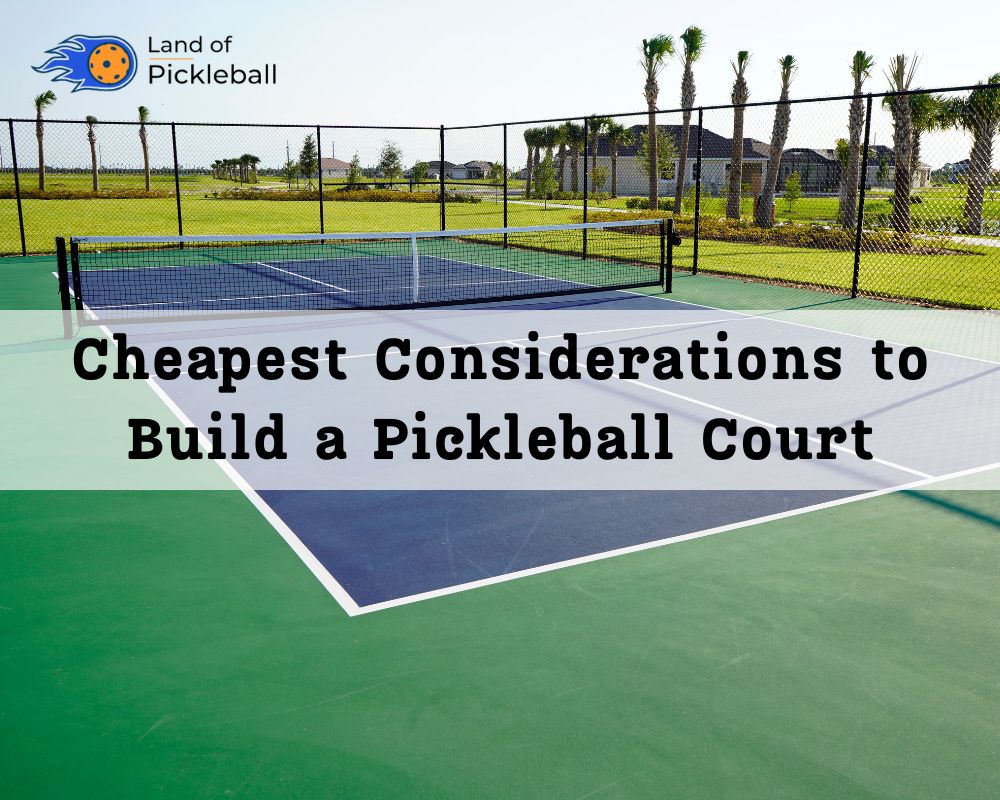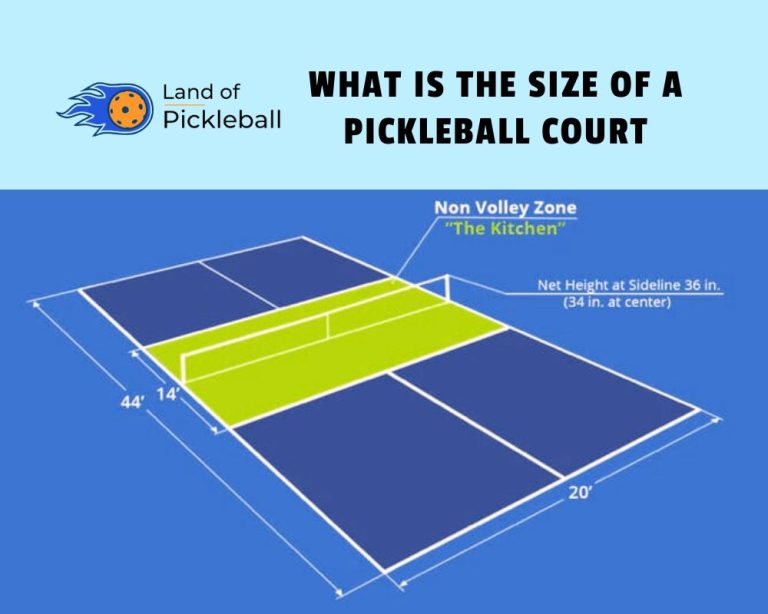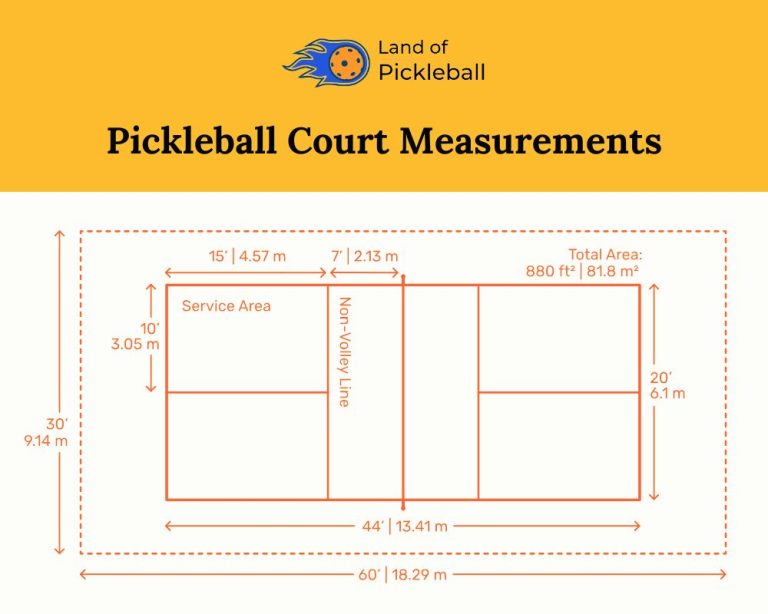Cheapest Way to Build a Pickleball Court
Cheapest doesn’t mean sacrificing your desired court quality; it’s about smart cost-cutting ways. Regarding this, we experienced and shared here our journey to build our own court from initial resistance to full-blown obsession, with details from a pickleball enthusiast who turned their backyard into the ‘PickleBnB.’
For the most cost-effective DIY backyard pickleball court, you must consider using compacted gravel, repurposing existing spaces, painting lines, affordable boundary materials, portable pickleball court material, and exploring further DIY options.
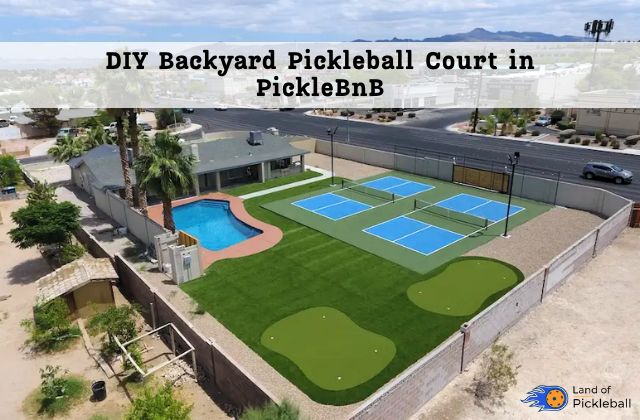
What is the Cheapest Way to Build a Pickleball Court?
For the most budget-friendly approach to building your pickleball court, strategic planning and some creativity are key elements. Now, you may undergo these steps to minimize its costs:
Therefore, by following these steps, you can create a budget-friendly pickleball court without sacrificing quality or functionality.
5 Considerations When Building Your Pickleball Court
1. Base Material: Concrete vs. Asphalt
Once you’re willing to find the Cheapest way to build a pickleball court, you need to choose the suitable base material for its longevity and improved performance. Hence, asphalt may seem cheaper initially, but it is used more frequently for repair and becomes costly in the long term. On the other hand, concrete offers better durability (initially costly) and requires less maintenance in the long run.
You may go for the post-tension concrete with a medium broom finish, which ensures longevity and minimal cracking. An ideal pickleball court with a dimension of 64 by 32 Feet must be five inches thick.
Total Cost: Approximately $43,000 for two courts.
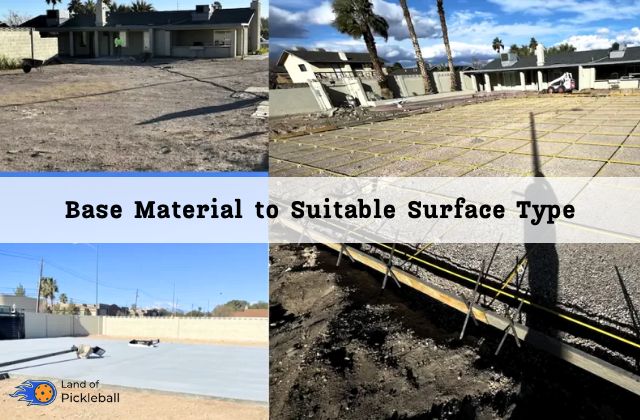
2. Surface Type: Acrylic vs. Alternative Options
Once you’ve determined the foundation of your pickleball court, the next step is selecting the surface type. Hence, you may consider color schemes as integral to this decision.
Typically, acrylic paint is used for surfacing, as was the case with our court. It requires professional application, which ensures proper preparation and multiple coats for durability, especially in hot climates like Las Vegas. Hence, Acrylic is ideal for permanent setups with fixed nets.
For multifunctional spaces accommodating various sports, alternatives like roll-out pickleball surfaces or sport court interlocking tiles are viable. These offer semi-permanent solutions but may necessitate removable nets. I’ve experienced roll-out courts in tournaments, which find them satisfactory if the underlying surface is well-maintained.
It’s essential to engage professionals for installation, as these options require expertise. Cutting corners on the base can lead to complications later. Since your personal preferences vary, it’s essential to make informed choices based on the intended usage and long-term durability of the court.
Total Cost: Around $9,000 for two courts, including lines, cleaning, prepping, and painting.
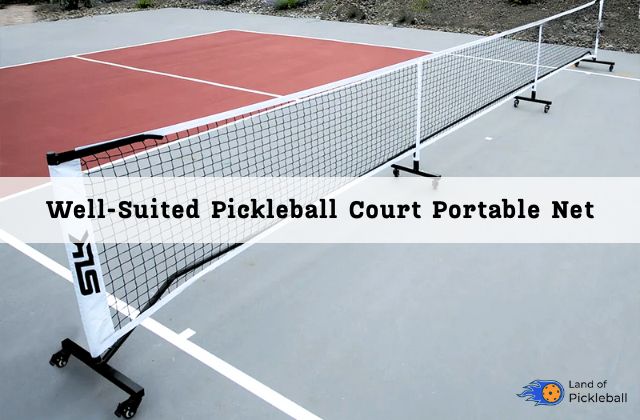
3. Nets: Permanent vs. Removable
Whether your net is in-ground (permanent) or removable depends on your usage preferences. While in-ground nets offer stability and convenience, removable nets provide flexibility for multi-purpose spaces. Consider your long-term goals and usage scenarios before making a choice.
Total Cost: Around $3,000 for in-ground nets.
4. Lighting
Proper lighting extends playing hours and enhances the gameplay experience, particularly during darker months. So, you should invest in quality lighting, which ensures optimal visibility and safety for evening play sessions.
Total Cost: Around $5,000 for adequate lighting.
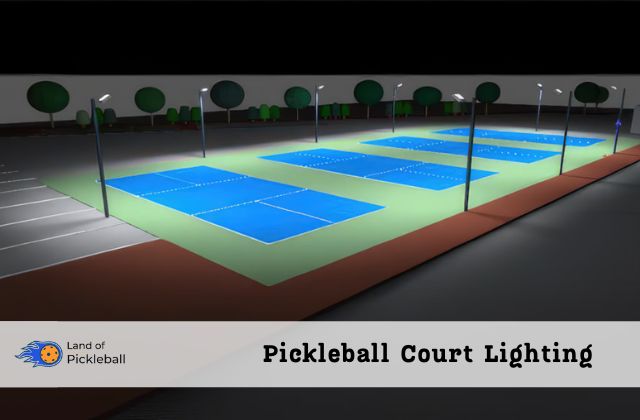
5. Directional Orientation
The directions of Pickleball court dimensions are the last consideration for your court creation. So, optimal directional orientation minimizes sun glare and ensures fair gameplay conditions. That’s why it should be in a north-to-south direction. This direction alleviates sun-related visibility issues, elevating your overall playing experience.
Meanwhile, you can analyze that the East-West orientation creates a huge hurdle in the mornings and evenings. It can affect you or your Pickleball team players, who can make excuses for losing shots or games.
Cost consideration: No extra cost but essential for optimal gameplay experience
However, by prioritizing cost-effective solutions and strategic planning, you can create a high-quality pickleball court that meets your needs and budget requirements.
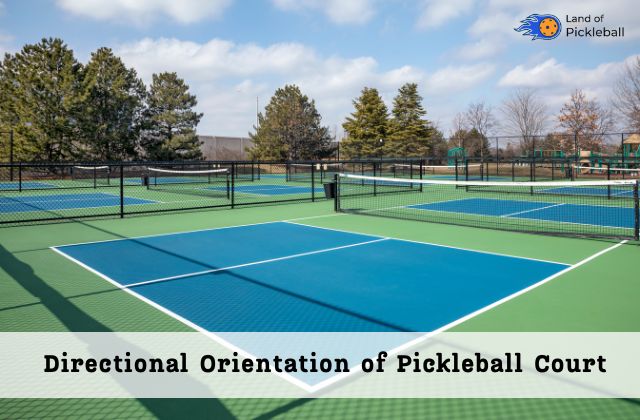
Cost Effect Materials for Your Cheap Pickleball Court Creation
For cost-effective materials when building a pickleball court, you may consider the following options:
By incorporating these strategies, you can build a pickleball court that is both cost-effective and high-quality.
What steps can be taken to increase your pickleball court’s lifespan?
To ensure your court’s longevity, you should consider these maintenance tips:
Budget-Friendly Tips for Upscaling Your Pickleball Court
Are you looking for cost-effective methods to elevate the aesthetic appeal of your Pickleball court by making it appear more expensive? Following are some suggestions that can make your cost-effective court seem more costly (upscale your court):
- You need to go for high-quality, vibrant acrylic tennis court paint to delineate lines and boundaries. So consider colors like bright yellow, teal, and red for a striking visual impact. These paints also ensure official longevity and visibility by applying two or more coats.
- You can enhance the court’s surroundings by adding landscaping features along its perimeter. You should usually arrange the potted shrubs, plants, or trees to significantly enhance the court’s overall attraction.
- If water conservation is a concern, you must consider xeriscaping using drought-resistant plant species. These can maintain an attractive landscape without excessive water usage.
- You need to utilize windscreens or install decorative netting around the court’s ends and sides. These approaches help contain balls during play and provide privacy from neighboring regions.
- Coating metal or plastic chain link fencing with paint that matches your court’s colors can turn it into a useful screen.
These improvements can be made gradually over time as your funds afford.
Affordable/Cheap Way to Create Pickleball Court
Before playing your pickleball court, you should understand the Cost to Build a Pickleball Court. When looking for cheap and money-saving aspects to build a budget-friendly pickleball court, it’s all possible in the following ways:
The most economical average cost to build a pickleball court could come to around $10,000.
Initiate Your Journey with LOP
Once you’re going to build a pickleball court, before this aspect, you should grasp the scope of the project entirely. To do so, take into account all the factors highlighted, expenses associated with contractors, particularly the surface options, and the various net choices available. Then, make a well-defined plan that aligns your requirements with your financial constraints.
Hence, with a well-organized plan, you and your Pickleball team members will be satisfied with their new pickleball court. When you’re prepared for construction and require essential supplies, then you may officially view the pickleball products and initiate the creation of your outdoor pickleball court today.
Final Thoughts
When considering the Cheapest way to build a pickleball court, several factors come into play. All you need to get started with pickleball is a racket, ball, light, and net, making it an accessible and enjoyable activity for everyone. Understanding your pickleball court orientation and location requirements is vital for proper design. So, whether you’re planning to construct a court for personal or community use, these considerations will guide you toward a successful and affordable project.

